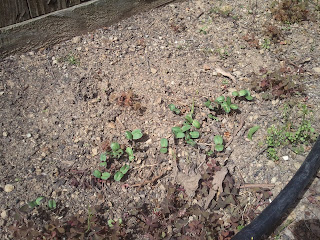
I received a bad batch of seeds, and wasted a lot of window sill space trying to get these puppies to germinate. I decided to use the plastic bag method with the remaining seeds to save space on my windowsill. The basic idea is to "plant" a lot of seeds in a bag, and only transfer the seeds that sprout. If you have never used this method before, it is a cool project to try out.
Note: I would not recommend using this method for very tiny or delicate seeds if you plan to transplant the seeds.
Materials: - Large Clear Ziploc bag or other clear resealable airtight bag.
- Paper Towel
- Water
- Seeds
- Pen
- Spray bottle (optional)
Directions:
1. Wet a
paper towel with
water, and squeeze out the excess water. The towel should be moist, but not dripping wet. If it is too wet, the seed can "drown," develop bacteria and/or rot. If you have a
spray bottle handy, you might want to use it to lightly mist the paper towel.
2. Spread out the paper towel and then drop the
seeds on one half of the paper towel. Space out the seeds so that they are not too clumped together. Fold over the other side of the paper towel over the seeds, and gently press your hands over the edges and the spaces between the seeds. This will create a seal and keep the seeds from falling out.

3. Slide the paper towel holding the seeds inside the
plastic bag. Seal the plastic bag. The bag will keep the water from escaping and provide constant moisture to the seeds, which is key to a successful germination.

4. Use the
pen to label the bag. I write down the name of the plant and the date. Hang the plastic bag up. You can use magnets to fix the bag to the refrigerator or weave the top portion of the bag in and out of the window blinds. Then wait for the seeds to sprout.

5. Once the seeds sprout, remove them from the bag and plant them in the ground. Do not pull on the seeds or seedlings because you are likely to damage the tender root system. Just take two fingers, place one finger on either side of the seedling, press down onto the moist paper towel and gently pull or tear apart the paper towel to free the seedings. If a bit of the paper towel remains on the root system just leave it and plant the whole thing in soil. It will eventually break down. Discard all of the seeds that did not sprout.










